I went in the Air Force with every
intention of making a career of the military. But while I had a deep
love for the military, my first love was flying. I'm not sure exactly
when I decided I wanted to be a pilot, but the first time I took the
controls of an airplane, there was no doubt in my mind that this was
what I wanted to spend my live doing. It was on the first airplane ride
I ever took in my life. One Sunday afternoon my Aunt Mary Nell took me
and my brother to the airport at Humboldt, Tennessee and we went for a
ride in a Piper Tri-Pacer. We went down again for another joy ride,
this time in a Cessna 170. Both times I got to sit up front with the
pilot and he let me take the controls.
When I enlisted, it was with the intention of going to the Academy and then to pilot training, but after I went on flying status at Pope I decided that I was part of a flight crew and gave up my ambitions to become a military pilot. I did give some thought to taking flying lessons at the aero club on Ft. Bragg but we were gone TDY so much I didn't have the time. Besides, I had no vehicle of my on to get to the airport. While I was at Naha, Okinawa one of the pilots let me take the controls of a Herky-bird and the flying bug bit me again. This time the venom took. Sometimes afterwards two of the other loadmasters in the squadron, Mike Cavanaugh and Sam McCracken, decided they wanted to fly too and one day we took a taxi up the island to the Kadena Aero Club, which was located on an old Japanese airfield just north of the base called Yomitan. My first few lessons were in a Piper J-3 Cub with a civilian instructor who was from the old school, meaning all he knew how to do was yell and berate his students. I decided to change instructors and airplanes and switched to an Aeronca Champ with a young soldier as my instructor. My lessons were interspersed between 16-day tours in Southeast Asia in our C-130s and I had yet to solo when my DEROS came up. My next assignment was at Robins AFB, Georgia which had an aero club too, and I took up where I had left off at Yomitan, only this time I was in a Cessna 150 which had a nosewheel instead of conventional landing gear. My first solo flight was at Wilson Field, the local airport for the Macon area.
I was at Robins for a year and by the time I got to Clark I had my private license. Clark had an aero club too and I joined as soon as I arrived, or close thereafter. My flights were all joy-rides, often taking my buddies or girls from the WAF Squadron up on local flights within 50 miles of the airport. I was still planning to stay in the Air Force and gave no thought at the time to continuing flight training. When I got to Charleston, South Carolina I didn't fly for awhile, but sometime in early 1971 I decided that if I didn't find something to keep me out of the NCO Club I was likely to become an alcoholic. For the first time in my adult life I had a lot of free time - I was in the first Air Force C-5 squadron and since so many new people were coming, the trips were used for training and qualified people who weren't designated as instructors didn't fly that much. The VA was paying for flight training beyond the private license amd I decided to take advantage of it. I enrolled in a commercial pilot course at Summerville Flying Service and started work on my commercial license. I also bought an airplane of my own, a Champion Tri-Champ, and flew it as often as I could on the side. I had developed an interest in aerobatics when I had a bad experience with a girl from the WAF Squadron at Clark and I started learning loops and rolls, mostly on my own, although I took a couple of aerobatics lessons at first. The Tri-Champ was capable of limited aerobatics but I wanted more and after about a year I bought a Champion Citabria. It didn't have an inverted system and after a few months I traded it for a newer version with one, a 7KCAB. I had become an "aerobatic fanatic" and got pretty good, enough so that I was able to get a low-altitude waiver from the FAA to perform air shows down to 500 feet.
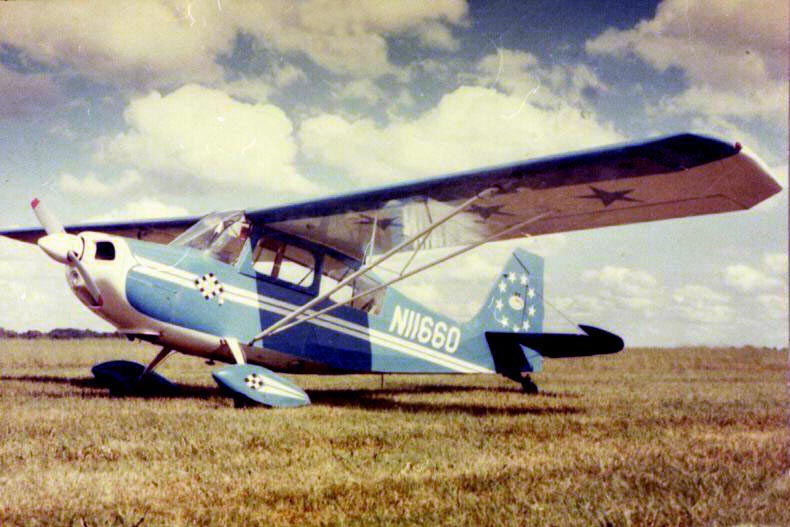
After obtaining my commercial pilots license I enrolled in multi-engine training. In the summer of 1973 my squadron transferred to Dover, Delaware and I continued my VA-sponsored flight training, first obtaining my Certified Flight Instructor certificate, then adding an Instrument Rating and an Instrument Instructor Rating. As I became more qualified, I began thinking that I should consider flying as a career. The Vietnam War had ended, at least as far as the US was concerned, and the Air Force was not as much fun as it had been. I had twelve years in the service and had only eight to go to retirement, but I decided that I had rather fly in the front rather than ride in the back and in July 1975, twelve years after I enlisted, I got out and went back to Tennessee.
My first job was as a flight instructor and charter pilot at McKellar Field at Jackson, Tennessee. It was not the best job in the world. My new boss was more of a talker than he was a businessman and I wasn't making enough money to even get by. I was also taking night classes at a Bible college in Memphis and it was only with my VA benefits that I was able to support my wife and growing family. The flight instructor/charter pilot's life is not an easy one and while I had planned to stay in West Tennessee, I took a job in Little Rock, Arkansas. It was a little better but my employer was hard to deal with and after about ten months I went back to Tennessee, this time to Dyersburg. By this time I had a lot more experience including some multi-engine. I moved to another job a few miles away with Taylor Aviation in Union City flying their Piper Aztec and Navajos. I did some instructing but became more and more involved in charter flying. I was with the Taylors for about a year and then we decided to try to find something closer to my wife's folks in Virginia and I took a job with Falwell Aviation in Lynchburg. Nearly all of my flying was multiengine and while I did some instructing, it was mostly instrument and multi-engine.
I was with the Falwells for five years. I had moved up from the Cessna 310 and 414 and Piper Navajo to the Beech King Air 100. I liked the people and the job but the finances were somewhat unstable as I was paid by the hour, which created a situation of feast or famine. In April 1984 I was employed by Ashland Oil, Inc. in Ashland, Kentucky. When I started out with them, I was flying King Air 200s, but two years after I started, the entire flight department changed airplanes as the King Airs were replaced by Citation S/IIs and the Saberliners were replaced by Citation IIIs. In 1986 I was typed in the Citation and since then my flying has been almost 100% in jets.
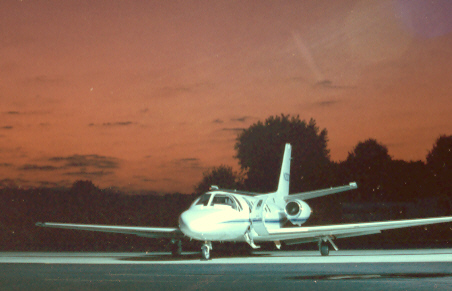
While I enjoyed the Hawker and liked my new company, I was not totally happy. I had met the young woman who would become my wife a year before I left Houston and although she is from Chicago, she likes the warmer weather in Texas and did not want to move to Findlay. I kept hoping for the opportunity to transfer to Marathons Houston operation but there seemed no hope of this ever happening. In the late summer of 2000 Marathon decided the needed to reduce expenses and offered a company-wide Voluntary Employee Retirement Package to everyone over the age of 45. I saw an opportunity to return to Houston and was the first person in the company to accept the offer. On December 1 my retirement was effective. My last flight was a few days earlier, a short flight to Pittsburgh for the day. I shot a GPS approach down to minimums into Findlay and the other pilot said that was a good note on which to end my career.
After I returned to Houston I started looking for another job. I took a position with Flight Safety, Texas as a ground/simulator instructor with the intention of instructing for the rest of my working career. That was in February 2001 and a few months later everything was turned upside down when terrorist flew a couple of airliners into the World Trade Center. Our company was hit hard in the fallout and began cutting employees. I survived the cuts for almost a year, but at the end of August, 2002 I found myself without a job. I decided to start flying contract, and managed to build up a pretty good business over the next fivc years. In August 2007 I was offered a job with,Wing Aviation, an aircraft management/charter company in Houston. I left Wing in early 2010 and shortly afterwards lost my FAA medical due to treatment with a prescription drug that isn't FAA approved for pilots.
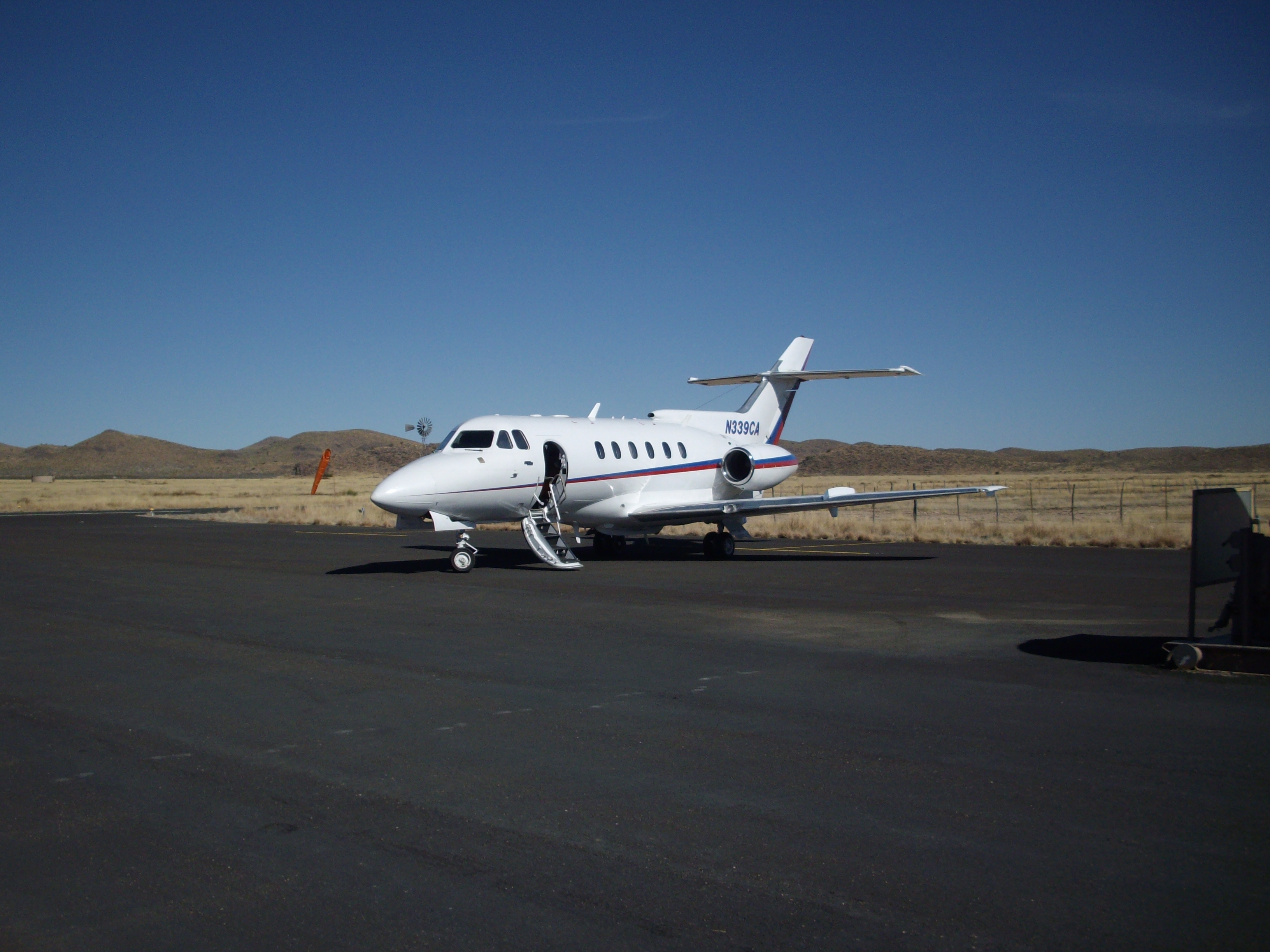
I recently decided to write a memoir about my flying career. It is now available from the publisher and from Amazon and other book sellers.
Home to Return
Update 3/10/2013
When I enlisted, it was with the intention of going to the Academy and then to pilot training, but after I went on flying status at Pope I decided that I was part of a flight crew and gave up my ambitions to become a military pilot. I did give some thought to taking flying lessons at the aero club on Ft. Bragg but we were gone TDY so much I didn't have the time. Besides, I had no vehicle of my on to get to the airport. While I was at Naha, Okinawa one of the pilots let me take the controls of a Herky-bird and the flying bug bit me again. This time the venom took. Sometimes afterwards two of the other loadmasters in the squadron, Mike Cavanaugh and Sam McCracken, decided they wanted to fly too and one day we took a taxi up the island to the Kadena Aero Club, which was located on an old Japanese airfield just north of the base called Yomitan. My first few lessons were in a Piper J-3 Cub with a civilian instructor who was from the old school, meaning all he knew how to do was yell and berate his students. I decided to change instructors and airplanes and switched to an Aeronca Champ with a young soldier as my instructor. My lessons were interspersed between 16-day tours in Southeast Asia in our C-130s and I had yet to solo when my DEROS came up. My next assignment was at Robins AFB, Georgia which had an aero club too, and I took up where I had left off at Yomitan, only this time I was in a Cessna 150 which had a nosewheel instead of conventional landing gear. My first solo flight was at Wilson Field, the local airport for the Macon area.
I was at Robins for a year and by the time I got to Clark I had my private license. Clark had an aero club too and I joined as soon as I arrived, or close thereafter. My flights were all joy-rides, often taking my buddies or girls from the WAF Squadron up on local flights within 50 miles of the airport. I was still planning to stay in the Air Force and gave no thought at the time to continuing flight training. When I got to Charleston, South Carolina I didn't fly for awhile, but sometime in early 1971 I decided that if I didn't find something to keep me out of the NCO Club I was likely to become an alcoholic. For the first time in my adult life I had a lot of free time - I was in the first Air Force C-5 squadron and since so many new people were coming, the trips were used for training and qualified people who weren't designated as instructors didn't fly that much. The VA was paying for flight training beyond the private license amd I decided to take advantage of it. I enrolled in a commercial pilot course at Summerville Flying Service and started work on my commercial license. I also bought an airplane of my own, a Champion Tri-Champ, and flew it as often as I could on the side. I had developed an interest in aerobatics when I had a bad experience with a girl from the WAF Squadron at Clark and I started learning loops and rolls, mostly on my own, although I took a couple of aerobatics lessons at first. The Tri-Champ was capable of limited aerobatics but I wanted more and after about a year I bought a Champion Citabria. It didn't have an inverted system and after a few months I traded it for a newer version with one, a 7KCAB. I had become an "aerobatic fanatic" and got pretty good, enough so that I was able to get a low-altitude waiver from the FAA to perform air shows down to 500 feet.

After obtaining my commercial pilots license I enrolled in multi-engine training. In the summer of 1973 my squadron transferred to Dover, Delaware and I continued my VA-sponsored flight training, first obtaining my Certified Flight Instructor certificate, then adding an Instrument Rating and an Instrument Instructor Rating. As I became more qualified, I began thinking that I should consider flying as a career. The Vietnam War had ended, at least as far as the US was concerned, and the Air Force was not as much fun as it had been. I had twelve years in the service and had only eight to go to retirement, but I decided that I had rather fly in the front rather than ride in the back and in July 1975, twelve years after I enlisted, I got out and went back to Tennessee.
My first job was as a flight instructor and charter pilot at McKellar Field at Jackson, Tennessee. It was not the best job in the world. My new boss was more of a talker than he was a businessman and I wasn't making enough money to even get by. I was also taking night classes at a Bible college in Memphis and it was only with my VA benefits that I was able to support my wife and growing family. The flight instructor/charter pilot's life is not an easy one and while I had planned to stay in West Tennessee, I took a job in Little Rock, Arkansas. It was a little better but my employer was hard to deal with and after about ten months I went back to Tennessee, this time to Dyersburg. By this time I had a lot more experience including some multi-engine. I moved to another job a few miles away with Taylor Aviation in Union City flying their Piper Aztec and Navajos. I did some instructing but became more and more involved in charter flying. I was with the Taylors for about a year and then we decided to try to find something closer to my wife's folks in Virginia and I took a job with Falwell Aviation in Lynchburg. Nearly all of my flying was multiengine and while I did some instructing, it was mostly instrument and multi-engine.
I was with the Falwells for five years. I had moved up from the Cessna 310 and 414 and Piper Navajo to the Beech King Air 100. I liked the people and the job but the finances were somewhat unstable as I was paid by the hour, which created a situation of feast or famine. In April 1984 I was employed by Ashland Oil, Inc. in Ashland, Kentucky. When I started out with them, I was flying King Air 200s, but two years after I started, the entire flight department changed airplanes as the King Airs were replaced by Citation S/IIs and the Saberliners were replaced by Citation IIIs. In 1986 I was typed in the Citation and since then my flying has been almost 100% in jets.

My marriage started falling apart
in 1992 and two year later I transferred to Houston where I became part
of the two-pilot operation with Scurlock-Permian Corporation. We had a
Citation II, which was a step down from the Citation V I had been
flying at Ashland, but I liked Houston and the job.
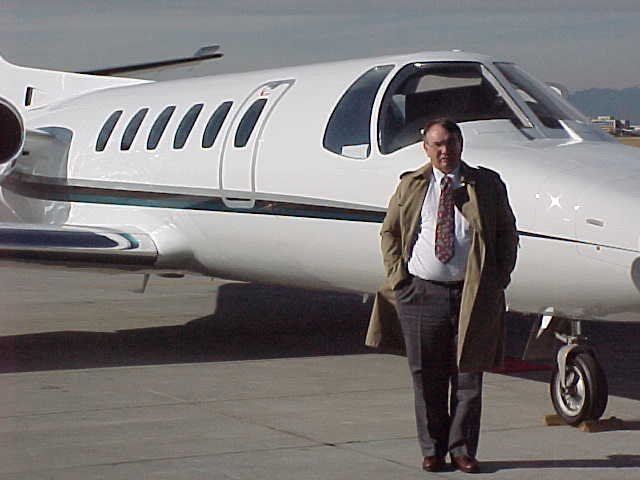

Unfortunately, our situation with
Scurlock became precarious in early 1997, and later that year I found
myself returning to Ashland "temporarily" as Ashland was in the process
of merging it's oil company with the downstream side of Marathon Oil, a
competitor located in Houston, but with the downstream division
headquartered in Findlay, Ohio. Things were very uncertain for several
months, but the other pilot and I were finally told that we would be
going into the new company, which was to be a joint venture. The people
in the Marathon aviation department had other ideas however, and they
managed to convince their higher-ups that they should provide the
aviation support for the new company. John and I would transfer first
into the new company, then to Marathon directly. As it turned out, I
spent eighteen months in Ashland "temporarily" then transferred to
Findlay to join the Marathon Oil aviation department. As soon as I got
there I went to Flight Safety in Wilmington, Delaware and was
type-rated in the Hawker.
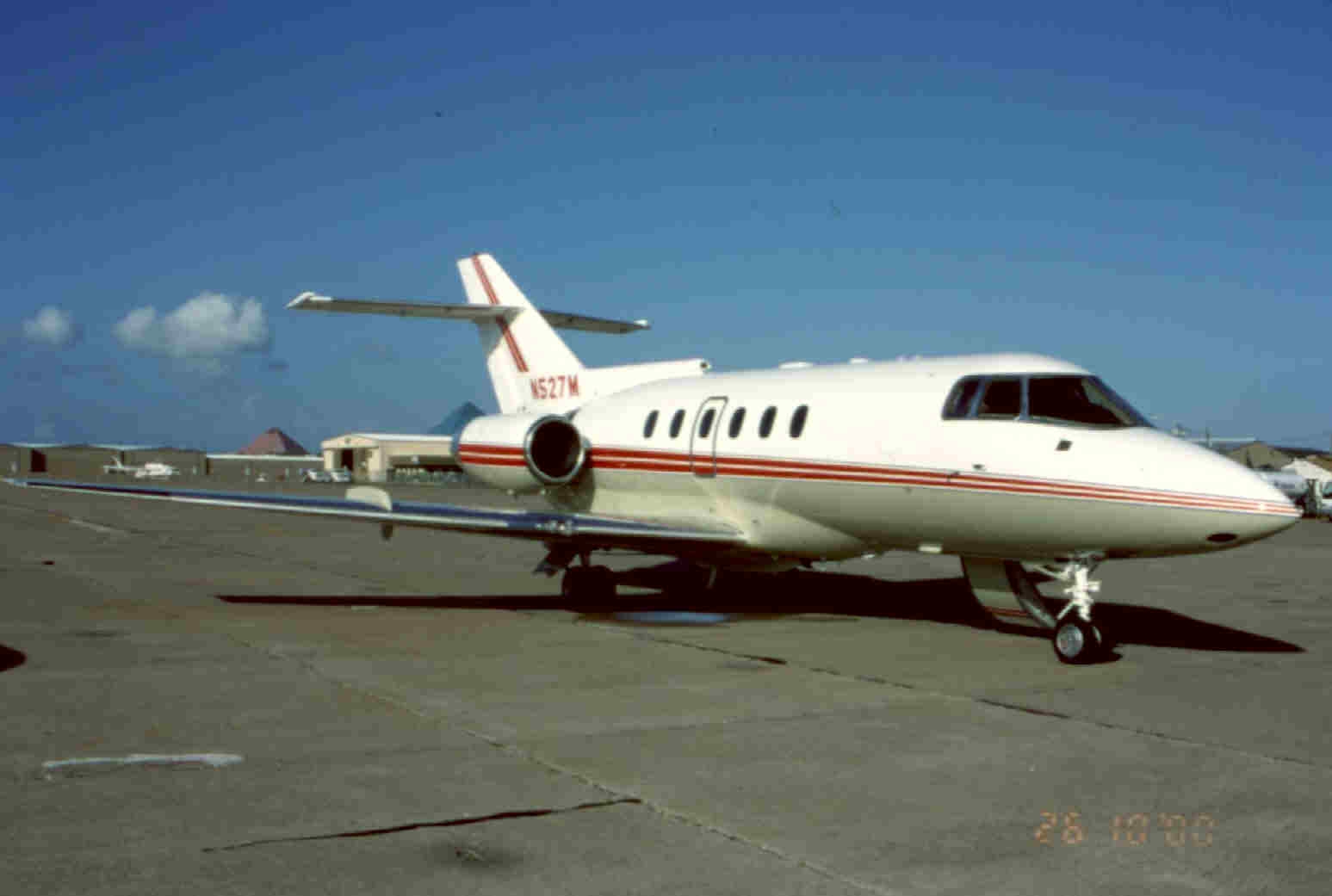

While I enjoyed the Hawker and liked my new company, I was not totally happy. I had met the young woman who would become my wife a year before I left Houston and although she is from Chicago, she likes the warmer weather in Texas and did not want to move to Findlay. I kept hoping for the opportunity to transfer to Marathons Houston operation but there seemed no hope of this ever happening. In the late summer of 2000 Marathon decided the needed to reduce expenses and offered a company-wide Voluntary Employee Retirement Package to everyone over the age of 45. I saw an opportunity to return to Houston and was the first person in the company to accept the offer. On December 1 my retirement was effective. My last flight was a few days earlier, a short flight to Pittsburgh for the day. I shot a GPS approach down to minimums into Findlay and the other pilot said that was a good note on which to end my career.
After I returned to Houston I started looking for another job. I took a position with Flight Safety, Texas as a ground/simulator instructor with the intention of instructing for the rest of my working career. That was in February 2001 and a few months later everything was turned upside down when terrorist flew a couple of airliners into the World Trade Center. Our company was hit hard in the fallout and began cutting employees. I survived the cuts for almost a year, but at the end of August, 2002 I found myself without a job. I decided to start flying contract, and managed to build up a pretty good business over the next fivc years. In August 2007 I was offered a job with,Wing Aviation, an aircraft management/charter company in Houston. I left Wing in early 2010 and shortly afterwards lost my FAA medical due to treatment with a prescription drug that isn't FAA approved for pilots.
I recently decided to write a memoir about my flying career. It is now available from the publisher and from Amazon and other book sellers.
Home to Return
Update 3/10/2013